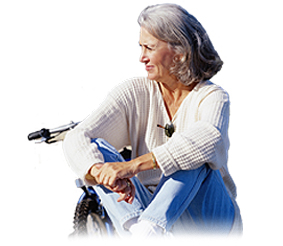Bennell KL, Buchbinder R, Hinman RS. Physical therapies in the management of osteoarthritis: current state of the evidence. Curr Opin Rheumatol. 2015;27(3):304-311. PMID: 25775185 www.ncbi.nlm.nih.gov/pubmed/25775185.
Bennell KL, Egerton T, Martin J, et al. Effect of physical therapy on pain and function in patients with hip osteoarthritis: a randomized clinical trial. JAMA. 2014;311(19):1987-1997. PMID: 24846036 www.ncbi.nlm.nih.gov/pubmed/24846036.
Cameron M, Chrubasik S. Oral herbal therapies for treating osteoarthritis. Cochrane Database Syst Rev. 2014;5:CD002947. PMID: 24848732 www.ncbi.nlm.nih.gov/pubmed/24848732.
Cibulka MT, Bloom NJ, Enseki KR, Macdonald CW, Woehrle J, McDonough CM. Hip pain and mobility deficits-hip osteoarthritis: revision 2017. J Orthop Sports Phys Ther. 2017;47(6):A1-A37. PMID: 28566053 www.ncbi.nlm.nih.gov/pubmed/28566053.
Clarke A, Pulikottil-Jacob R, Grove A, et al. Total hip replacement and surface replacement for the treatment of pain and disability resulting from end-stage arthritis of the hip (review of technology appraisal guidance 2 and 44): systematic review and economic evaluation. Health Technol Assess. 2015;19(10):1-668. PMID: 25634033 www.ncbi.nlm.nih.gov/pubmed/25634033.
Doroshow JH. Malignant tumors of bone, sarcomas, and other soft tissue neoplasms. In: Goldman L, Shafer AI, eds. Goldman-Cecil Medicine. 25th ed. Philadelphia, PA: Elsevier Saunders; 2016:chap 202.
Goodnough LT, Monk TG. Patient Blood Management. In: Miller RD, Cohen NH, Eriksson LI, Fleisher LA, Wiener-Kronish JP, Young WL, eds. Miller's Anesthesia. 8th ed. Philadelphia, PA: Elsevier Saunders; 2015:chap 57.
Harkess JW, Crockarell JR. Arthroplasty of the hip. In: Azar FM, Beatty JH, Canale ST, eds. Campbell's Operative Orthopaedics. 13th ed. Philadelphia, PA: Elsevier; 2017:chap 3.
Hayashi J, Leff B. Home care. In: Ham RJ, Sloane PD, Warshaw GA, Potter JF, Flaherty E, eds. Ham's Primary Care Geriatrics. 6th ed. Philadelphia, PA: Elsevier Saunders; 2014:chap 12.
Hochberg MC, Altman RD, April KT, et al. American College of Rheumatology 2012 recommendations for the use of nonpharmacologic and pharmacologictherapies in osteoarthritis of the hand, hip, and knee. Arthritis Care Res (Hoboken). 2012;64(4):465-467. PMID: 22563589 www.ncbi.nlm.nih.gov/pubmed/22563589.
Huddleston JI, Goodman S. Hip and knee pain. Firestein GS, Budd RC, Gabriel SE, McInnes IB, O’Dell JR. Kelley and Firestein’s Textbook of Rheumatology. 10th ed. Philadelphia, PA: Elsevier; 2017:chap 48.
Lavelle DG. Hip resurfacing. In: Azar FM, Beaty JH, Canale ST, eds. Campbell's Operative Orthopaedics. 13th ed. Philadelphia, PA: Elsevier; 2017:chap 4.
Leong M, Murphy KD, Phillips LG. Wound healing. In: Townsend CM, Beauchamp RD, Evers BM, Mattox KL, eds. Sabiston Textbook of Surgery. 20th ed. Philadelphia, PA: Elsevier; 2017 chap 6.
Lieberman JR, Engstrom SM, Solovyova O, Au C, Grady JJ. Is intra-articular hyaluronic acid effective in treating osteoarthritis of the hip joint? J Arthroplasty. 2015;30(3):507-511. PMID: 25542833 www.ncbi.nlm.nih.gov/pubmed/25542833.
Lowe CJ, Davies L, Sackley CM, Barker KL. Effectiveness of land-based physiotherapy exercise following hospital discharge following hip arthroplasty for osteoarthritis: an updated systematic review. Physiotherapy. 2015;101(3):252-265. PMID: 25724323 www.ncbi.nlm.nih.gov/pubmed/25724323.
Manyanga T, Froese M, Zarychanski R, et al. Pain management with acupuncture in osteoarthritis: a systematic review and meta-analysis. BMC Complement Altern Med. 2014;14:312. PMID: 25151529 www.ncbi.nlm.nih.gov/pubmed/25151529.
Matteson EL, Osmon DR. Infections of bursae, joints, and bones. In: Goldman L, Shafer AI, eds. Goldman-Cecil Medicine. 25th ed. Philadelphia, PA: Elsevier Saunders; 2016:chap 272.
Percope de Andrade MA, Campos TV, Abreu-E-Silva GM. Supplementary methods in the nonsurgical treatment of osteoarthritis. Arthroscopy. 2015;31(4):785-792. PMID: 25633815 www.ncbi.nlm.nih.gov/pubmed/25633815.
Schnitzer TJ, Marks JA. A systematic review of the efficacy and general safety of antibodies to NGF in the treatment of OA of the hip or knee. Osteoarthritis Cartilage. 2015;23 Suppl 1:S8-S17. PMID: 25527221 www.ncbi.nlm.nih.gov/pubmed/25527221.
Sershon R, Balkissoon R, Valle CJ. Current indications for hip resurfacing arthroplasty in 2016. Curr Rev Musculoskelet Med. 2016;9(1):84-92. PMID: 26830851 www.ncbi.nlm.nih.gov/pubmed/26830851.
Svege I, Nordsletten L, Fernandes L, Risberg MA. Exercise therapy may postpone total hip replacement surgery in patients with hip osteoarthritis: a long-term follow-up of a randomised trial. Ann Rheum Dis. 2015;74(1):164-169. PMID: 24255546 www.ncbi.nlm.nih.gov/pubmed/24255546.
U.S. Food and Drug Administration. U.S. Department of Health and Human Services. Blood and blood products. www.fda.gov/BiologicsBloodVaccines/BloodBloodProducts/default.htm. Updated February 2, 2018. Accessed November 13, 2018.
The information provided herein should not be used during any medical emergency or for the diagnosis or treatment of any medical condition. A licensed medical professional should be consulted for diagnosis and treatment of any and all medical conditions. Links to other sites are provided for information only -- they do not constitute endorsements of those other sites. No warranty of any kind, either expressed or implied, is made as to the accuracy, reliability, timeliness, or correctness of any translations made by a third-party service of the information provided herein into any other language. © 1997-
A.D.A.M., a business unit of Ebix, Inc. Any duplication or distribution of the information contained herein is strictly prohibited.













